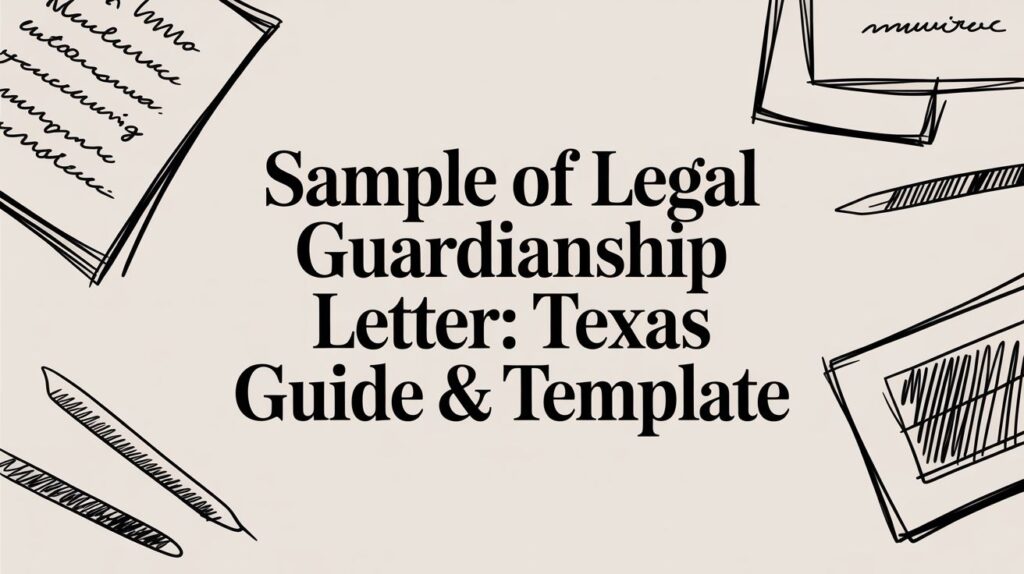Understanding Guardianship Letters
A guardianship letter is a crucial document that outlines your preferences for the care of a minor or an incapacitated adult in the event you are unable to fulfill that role. This letter serves as a legal declaration of your wishes and provides guidance to the courts regarding your chosen guardian.
In Texas, a guardianship letter can include specific instructions about the type of care you envision for your loved one, the values you wish to uphold, and any particular considerations regarding their upbringing or well-being. Having a well-drafted guardianship letter can significantly ease the transition and ensure that your intentions are respected.
Key Components of a Legal Guardianship Letter
When drafting a legal guardianship letter, it is important to include several key components to ensure clarity and legal effectiveness. These components typically include the names and contact information of the proposed guardians, a clear statement of your wishes, and any specific instructions regarding the care and upbringing of the child or individual.
Additionally, you may want to include information about financial arrangements, medical care preferences, and education decisions. By providing comprehensive details, you can help the appointed guardian understand your expectations, which can prevent misunderstandings and disputes in the future.
Legal Considerations for Guardianship Letters in Texas
In Texas, while a guardianship letter itself may not carry the same weight as a court order, it is still an important document that can influence judicial decisions. Understanding the legal framework surrounding guardianship can help you navigate the process more effectively.
It is advisable to consult with an attorney who specializes in family law to ensure that your guardianship letter aligns with Texas laws and best practices. This legal guidance can provide you with peace of mind, knowing that your wishes will be honored in the event of an emergency.
Steps to Creating a Guardianship Letter
Creating a guardianship letter involves several important steps that can help ensure your document is both effective and legally sound. Start by brainstorming the qualities and characteristics you seek in a guardian, followed by drafting the letter with clear and concise language.
Once you have a draft, consider having it reviewed by a legal professional to ensure that it meets all legal requirements and adequately reflects your intentions. Finally, be sure to share the completed letter with the proposed guardian and any relevant family members to ensure everyone is informed of your wishes.

